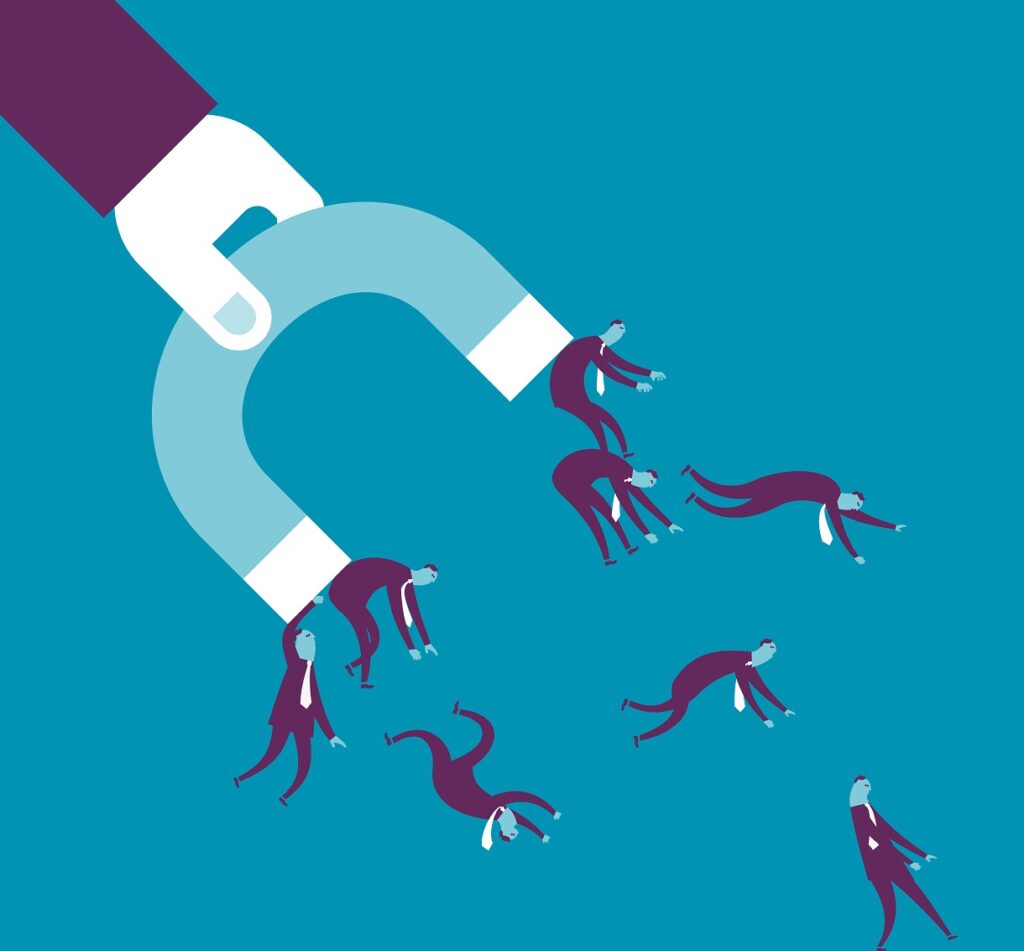The term ‘gamification’ is one which is widely misunderstood. Many associate it with gaming – conjuring up images of teenage boys playing ‘shoot em up’ on the latest console in their bedrooms. In fact recent research from Penna found that 89% of consumers didn’t know what gamification was. The actual definition is this: The concept of applying game mechanics and game design techniques to engage and motivate people to achieve their goals.
Its application in HR is still in its infancy, and although Penna’s ‘Big Game Hunters’ [PDF] report found that 54% of HRDs have a personal interest in using gamification to improve the performance of their people, in stark contrast 44% said their organisation was ‘not at all interested’ in exploring its potential. It’s one of the reasons why we’re hosting a series of gamification seminars soon – to explore that mismatch and to help organisations understand how powerful a business tool it can be.
So how exactly can it be used in HR, specifically for attracting talent? Some might be familiar with its application as a learning tool or even for internal comms, but its potential for recruitment is yet to be realised. Penna’s research showed there are cultural barriers in organisations and over a quarter (27%) of HRDs said the perceived cost was an issue. Yet in reality using gamification for attraction and recruitment offers a solid return on investment.
With our research showing that HR professionals are keen to build a solid business case for investing in gamification, we have provided some insights into why gamification is so effective as an attraction and recruitment tool:
1) It’s not ‘new’
Penna’s Big Game Hunters report found that many organisations feel gamification is too ‘new’ for them, with 70% of HRDs admitting it hasn’t been used in their workplace at all before, and they are therefore cautious about investing in something without proof that it works. At Penna we are keen to challenge those misconceptions, as gamification can overcome established organisational challenges but by harnessing the power of technology and innovation to make those solutions have more of an impact. This extends to attraction strategies.
Using gamification for early years and graduate recruitment is actually pretty well established. Penna worked in partnership with KPMG in 2013 on a game to help them recruit talented graduates. Marriott hotels also created a recruitment campaign to attract potential employees using an online game that encouraged young talent to take an interest in hospitality as a career path.
But there’s no reason why its use should be confined to graduate recruitment schemes and age of employees should not be a barrier. Our research found that women over 45 actually play games the most frequently – proof that assumptions around appropriate audiences for gamification should be reconsidered.
2) It provides a more memorable user experience
The fundamentals of attraction strategies are all about getting potential employees to quickly engage with your organisation, understand your brand and most importantly, want to work for you. In order for this to be successful, there should be something about your organisation and brand that they remember, and gamification can really help. It is less labour intensive than them reading through your company brochure or trying to get a feel for the company via your website and social channels.
For example, gamification could create an immersive experience for the candidate, creating an environment which looks and feels exactly like your organisation and helps them quickly understand what it would be like to work for you and whether the role is right for them. Receiving information in this way is far more likely to ‘stick’, and it doesn’t feel like a chore.
3) It can help you reach a wider audience
Gamification done well has a uniquely viral quality to it. How many times have you shared fun interactive games or even Buzzfeed quizzes over email or social media with friends or colleagues that you know they will feel compelled to complete? Probably quite a few. Gamification taps into these basic motivations to ‘keep going’ with something that is interesting, encourages reward seeking behaviour, and which feels like it has a useful or fun end goal
If you are looking to extend the reach of your recruitment campaigns then gamification can be a great way to do that as users share with those in their network, and compete against each other which in turn increases engagement. The way gamification works is that it can be designed to be ‘dipped into’ at any time too, which helps capture your audience during their downtime, further increasing reach.
4) It improves relationships
Making the attraction and recruitment experience more memorable for candidates, even those that aren’t successful, has a positive impact on how they feel about your organisation. That’s not just because they’ve had fun playing a game and will therefore think more favourably of your organisation. It’s more to do with the benefits and learnings they will get from engaging with your organisation in this way.
As gamification can be set up to create an incredibly true to life simulation, they can very clearly see what the job they’re applying for would be like, and get a more representative sense of what it’s like to work for your company. It may also help them consider other abilities or roles as it is purely experiential and helps remove barriers they might have in their mind as to their skills and capabilities.
This means that successful candidates are more readily deployable, and those that aren’t this time could be more likely to consider applying for future roles they could be better suited for.
5) It provides an extra filter
Gamification can be used as quite a sophisticated assessment tool, tapping into technology for impressive data analysis and measurement capabilities. If your strategy isn’t about attracting volume of candidates but you’re looking for a small number of applicants with a very specific set of skills and attributes, then gamification can provide a very measurable solution.
At Penna, our team of occupational psychologists are as involved in the development of gamification tools as our technical experts, and that’s to ensure that they are linked to the behaviours, skills, attitudes and capabilities of the role they’re set up to recruit for. By building assessment into the game, organisations can be confident that those who complete it have the right set of core competencies before they proceed to the next stage.






